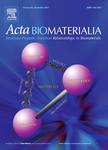版权所有:内蒙古大学图书馆 技术提供:维普资讯• 智图
内蒙古自治区呼和浩特市赛罕区大学西街235号 邮编: 010021

作者机构:Med Univ Graz Gottfried Schatz Res Ctr Div Biophys A-8010 Graz Austria BioTechMed Graz Graz Austria
出 版 物:《ACTA BIOMATERIALIA》 (生物材料学报)
年 卷 期:2020年第106卷
页 面:34-53页
核心收录:
学科分类:0831[工学-生物医学工程(可授工学、理学、医学学位)] 08[工学] 0805[工学-材料科学与工程(可授工学、理学学位)] 0836[工学-生物工程]
基 金:Austrian Science Fund (FWF) [F3210-N18, I2760-B30] BioTechMed-Graz award European Union Marie Curie Actions (MSCA) Funding Source: Marie Curie Actions (MSCA) Austrian Science Fund (FWF) [I2760] Funding Source: Austrian Science Fund (FWF)
主 题:Growth and remodeling Pressure overload Structural remodeling Computational modeling Hypertrophy
摘 要:Cardiac growth and remodeling (G&R) refers to structural changes in myocardial tissue in response to chronic alterations in loading conditions. One such condition is pressure overload where elevated wall stresses stimulate the growth in cardiomyocyte thickness, associated with a phenotype of concentric hypertrophy at the organ scale, and promote fibrosis. The initial hypertrophic response can be considered adaptive and beneficial by favoring myocyte survival, but over time if pressure overload conditions persist, maladaptive mechanisms favoring cell death and fibrosis start to dominate, ultimately mediating the transition towards an overt heart failure phenotype. The underlying mechanisms linking biological factors at the myocyte level to biomechanical factors at the systemic and organ level remain poorly understood. Computational models of G&R show high promise as a unique framework for providing a quantitative link between myocardial stresses and strains at the organ scale to biological regulatory processes at the cellular level which govern the hypertrophic response. However, microstructurally motivated, rigorously validated computational models of G&R are still in their infancy. This article provides an overview of the current state-of-the-art of computational models to study cardiac G&R. The microstructure and mechanosensing/mechanotransduction within cells of the myocardium is discussed and quantitative data from previous experimental and clinical studies is summarized. We conclude with a discussion of major challenges and possible directions of future research that can advance the current state of cardiac G&R computational modeling. Statement of Significance The mechanistic links between organ-scale biomechanics and biological factors at the cellular size scale remain poorly understood as these are largely elusive to investigations using experimental methodology alone. Computational G&R models show high promise to establish quantitative links which allow more